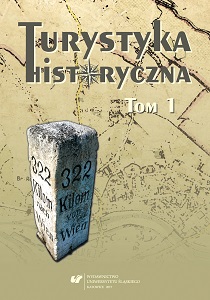Szlak Zabytków Industrialnych Województwa Śląskiego
Industrial Monuments Route of the Silesian Voivodeship
Author(s): Zbigniew Hojka
Subject(s): Historical Geography, Local History / Microhistory
Published by: Wydawnictwo Uniwersytetu Śląskiego
Keywords: industrial monuments; tourist path; cultural heritage;
Summary/Abstract: Industry in Silesia and Lesser Poland has been developing for ages. However, during the last 200 years that area became one of the leading industrial regions in Europe. The number of industrial monuments in the Silesian Voivodeship is very large. Many of them are proudly represented or used in different ways. They fascinate people with their architectural shape, created thanks to the constructors’ sense, and please the eye with wonderful shapes. They allow one to better recognize the history of these lands. There are so many of them that it was possible to create many interesting tourist paths. On the path you can find machines and devices which are still working. The most interesting places which create Industrial Monuments Route of the Silesian Voivodeship are: Black Trout Adit in Tarnowskie Góry, coal miners settlements in Katowice Nikiszowiec, Giszowiec, “Królowa Luiza” Adit in Zabrze, Guido Coal Mine in Zabrze, Tychy Brewery, Drill Mine of the “Sztygarka” Town Museum. On the area of the Silesian Voivodeship there are cities, which take care for industrial heritage like Zabrze or Gliwice as well as cities where industrial monuments are not properly exhibited. Some of post‑industrial buildings currently function as places connected with culture, services and trade. Industrial monuments are very unique and because of that, they are integral part of European Cultural Heritage. Since 2006, even Industrial Monuments Route of the Silesian Voivodeship works. It was created as a path for drivers with number of 36 monuments. It is promoted as a branded tourist product, which includes the most interesting and well preserved industrial monuments connected with coal mining, steel mill, light and food industry, railway transport, telecommunication and people’s lives. In 2010 it was added to European Route of Industrial Heritage. A supplement of this path, Industriada – Industrial Monuments Path Festival, is organized since 2010.
Book: Turystyka historyczna T. 1
- Page Range: 205-241
- Page Count: 37
- Publication Year: 2017
- Language: Polish
- Content File-PDF

